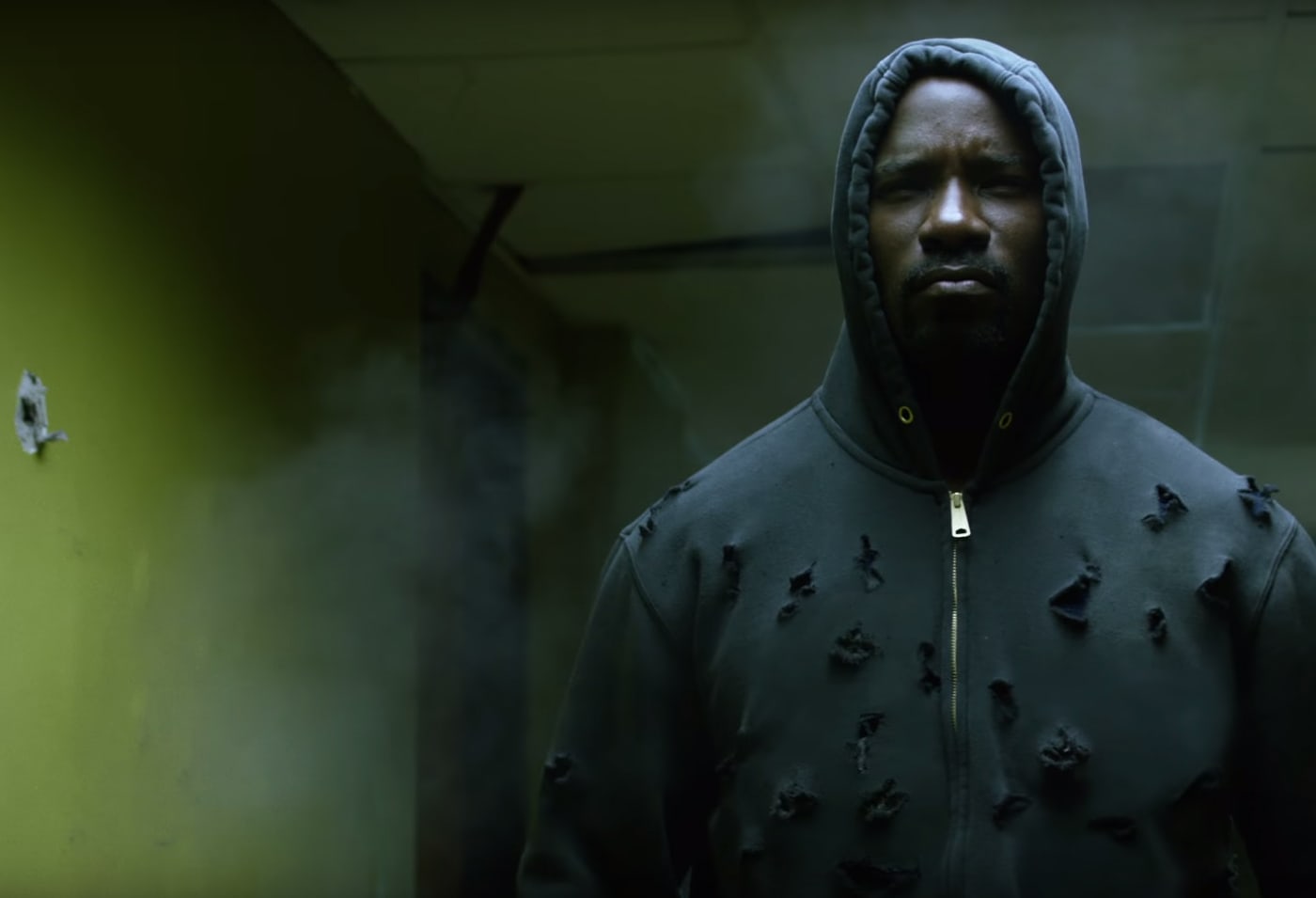
Netflix released “Daredevil,” a web television series developed by Marvel that brought unprecedented style and nuance to the superhero genre, in April of 2015. The online network and the production division collaborated once again to bring audiences “Jessica Jones,” a series that drew heavily on film noir and post-modern themes to deliver what many critics regarded as the best superhero television program ever produced, in November of 2015.
“Luke Cage,” is the latest joint project between Netflix and Marvel, premiered via streaming on Sep. 28, 2016. Naturally, given the acclaim that surrounded the previous Marvel and Netflix series, expectations were high. With a superb cast, a fun and definitive style and an unrelentingly complex and bold story, “Luke Cage” not only matches the fast-growing standard for Netflix superhero programming, but also cements itself as one of the most promising new series of 2016.
The show centers around its titular hero, Luke Cage (Mike Colter), a wrongfully-imprisoned inmate who escaped lockup after a freak experiment endowed him with super-strength and bulletproof skin.
The character, based on the groundbreaking 1970s African-American superhero of the same name, is doggedly devoted to his personal principles and his adopted community of Harlem, New York, where the brunt of the show is set.
Although the writing team of “Luke Cage” is admirably devoted to developing several complex characters, the plotline of Cage himself indisputably takes the forefront of the show. Colter plays Luke without compromise, lending the show’s protagonist a surface appearance of pure strength and persistent moralism (Cage refuses to take the lives of his enemies), while aptly displaying the hero’s inner conflict of values in his quieter, weaker moments.
Cage faces a number of nemeses from his original run in the comics, meticulously updated for the 21st century. The first is Cornell “Cottonmouth” Stokes (Mahershala Ali), a gun-runner and club owner whose illicit operations Luke repeatedly shuts down with brute force. Mariah Dillard (Alfre Woodard), a corrupt city councilwoman and Cottonmouth’s cousin, is perhaps Cage’s most persistent adversary in the show.
The first season’s overarching villain, however, is undoubtedly Willis “Diamondback” Stryker (Erik LaRay Harvey), a militantly Christian weapons manufacturer who holds a personal vendetta against Cage and uses both Cottonmouth and Dillard as his pawns in an all-out war against the bulletproof hero.
Ali dominates the entire first half of the season with his layered portrayal of Cottonmouth, a tragic villain who was born into a life of crime he never asked for. Ali uses his acting ability to illustrate both the over-the-top machismo and internal despair of Cottonmouth, making him a simultaneously fearsome and pitiable antagonist.
Woodard, delivering perhaps the most riveting performance of the entire season, gives the audience an equally complex character in Dillard, a natural manipulator perhaps better suited for her cousin’s role as a mob boss than for her own political position. While Harvey’s portrayal of Diamondback also contains trace levels of nuance, his bombast and overtly sinister villainy makes him more of a fun, straight-from-the-comics type character that provides a physical and verbal foil to Colter’s measured and ethical Cage.
The most notable deuteragonists is Misty Knight (Simone Missick), a police detective arguably as morally motivated as Cage. Missick devotedly portrays the intrepid detective’s struggle to reconcile her origins in Harlem with her duty to an increasingly bureaucratic, corrupt and often racist police force.
While strong writing and acting forms the backbone of “Luke Cage,” some of its most fun moments come from its colorful stylistic choices. “Luke Cage” draws on the Blaxploitation films of the 1970s to not only strengthen the show’s thematic ties to the black community, but also to heighten the enjoyable outrageousness of the show’s many expertly directed and executed fight scenes.
The show revels in its fistfights with a flair taken straight from the action sequences of movies like “Sweet Sweetback’s Baadasssss Song” and “Shaft.” Additionally, most of Cage’s corny pickup lines and battle quips seem to be ripped straight from the mouths of smooth-talking Blaxploitation-era heroes. Even the show’s funk-filled soundtrack echoes the compositions of Isaac Hayes and Marvin Van Peebles, it also contains several songs by the Wu-Tang Clan.
The show’s biggest accomplishment is that it manages to accomplish what previous Netflix and Marvel outings could not: it stays cohesive in both style and story throughout its entire first season, and refuses to make compromises in plot and character.
“Luke Cage” focuses on painting complex characters first, and then allows for its story to develop naturally.
“Luke Cage” gives audiences and critics a new pinnacle of superhero television, a show that not only features style and complexity, as “Daredevil” and “Jessica Jones” do, but delivers them with crisp writing and a cohesive set of themes and visuals. The performances, writing and production choices of “Luke Cage” should not only re-enthuse superhero fans preparing for the upcoming “Iron Fist” and “Defenders” Marvel and Netflix series, but should admonish the last of any cynics claiming that comic book premises cannot result in structured and smart shows.
Provided by: Hofstra Critics

